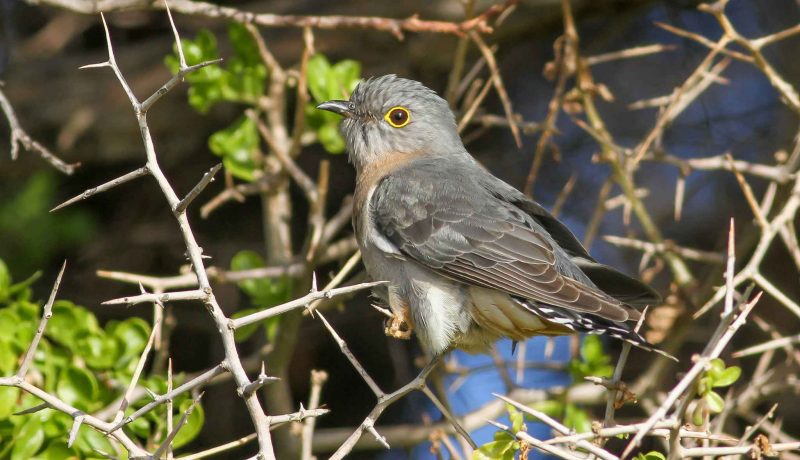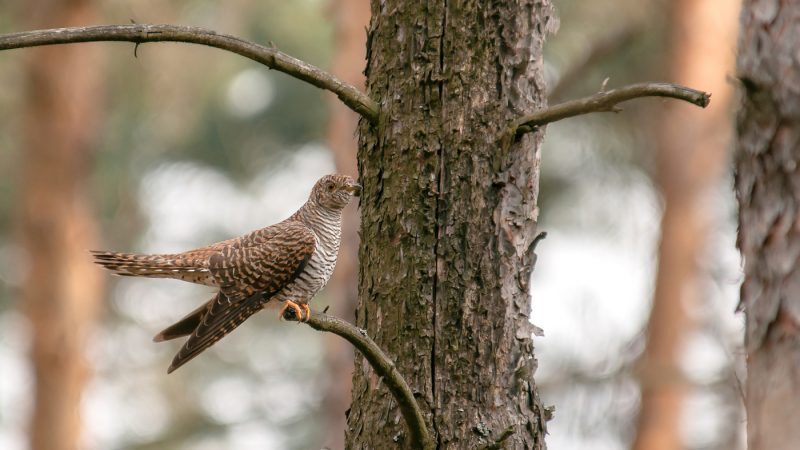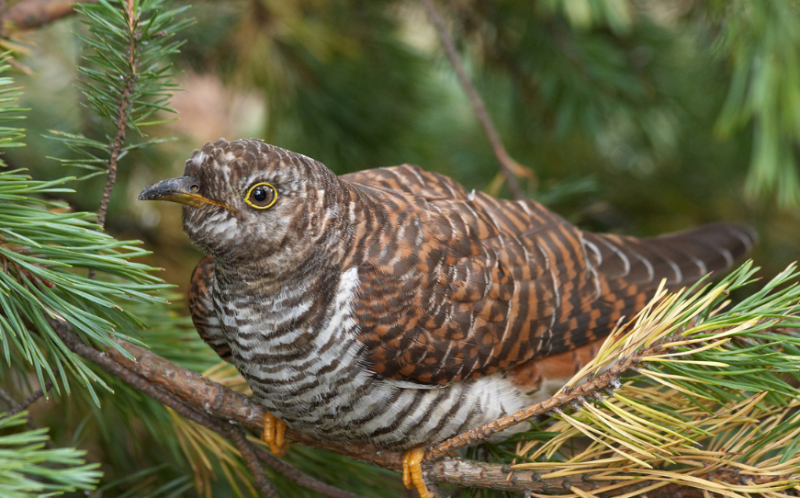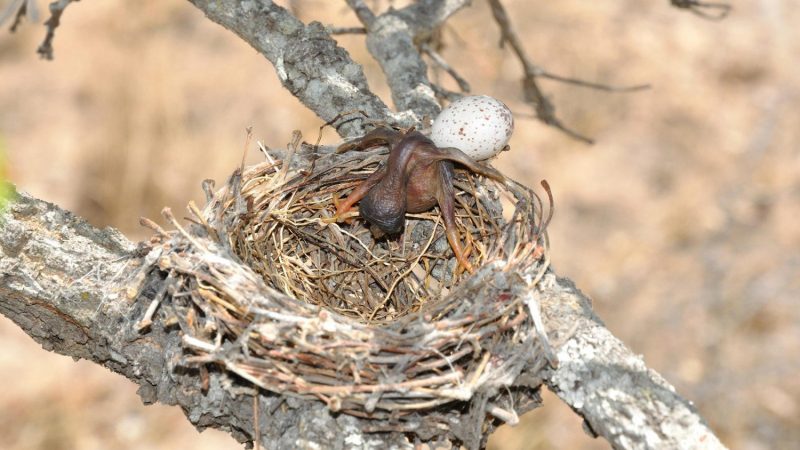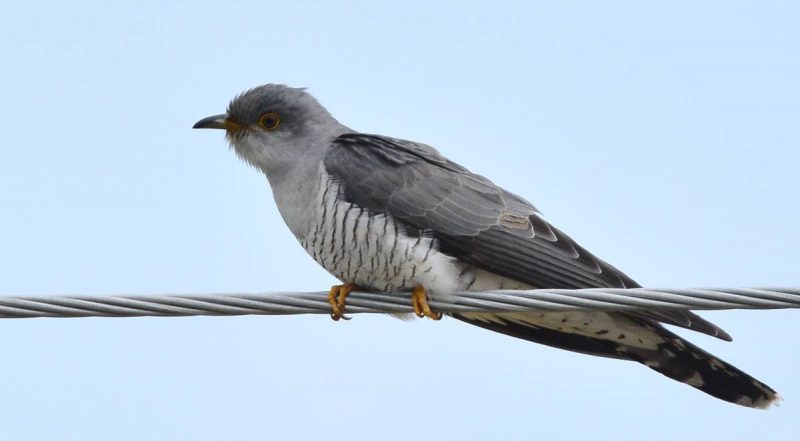It is hard to imagine a warm season without melodic crowing. In childhood, many considered the number of these sounds, receiving predictions. But rarely did anyone manage to see what the cuckoo bird looks like, which published this lingering “cuckoo!”, It was indistinguishable among the branches.
Material Content:
Cuckoo features and habitat
In the biological genus of the cuckoo, almost all representatives are nesting parasites. They are distributed throughout the globe - in the Eastern Hemisphere, in the greatest variety in tropical Asia. They also live in Australia, America, Africa, on the islands of the Pacific and Atlantic oceans. The only place where these birds do not exist is Antarctica.
In the territory of the post-Soviet space, the common cuckoo (Cuculus canorus) is most often found.
Habitats of some cuckoo species:
- crested cuckoo - south of Europe, Asia and Africa;
- thick-billed cuckoo - Guinea and Mozambique;
- fan-tailed bristle cuckoo - Australia and Tasmania;
- dong cuckoo - tropical Asia and the Philippines;
- gigantic cuckoo - Australia, New Guinea, Sunda Islands;
- peacock cuckoo - South America;
- four-winged cuckoo - Mexico, Bolivia, Argentina;
- Larvae cuckoos - Florida, Central America, West Indies and South America.
The sizes of different types of cuckoos are excellent, but they all have a graceful body, a long tail and strong legs. They most often inhabit forests, but some species prefer a more open area.
Character and lifestyle
Thanks to the special sounds: “Ku-ku” that these birds can make, they are called the same in all languages of the world - cuckoos. Only males cook. With the help of this sound, they attract and search for females.
Females are much more silent, they publish a long, sonorous trill, which Russian bird-catchers at one time called the cuckoo flight. Nightingales, who can imitate the voices of other birds, insert a cuckoo trill into their song.
The genus Cuculus canorus occupies the entire northern part of Eurasia from the British Isles to Kamchatka. Female cuckoos have their own territory, they protect it from other representatives of a kind. Even during the construction of other people's nests, the cuckoo finds them, and conducts careful monitoring of the egg laying. Having chosen a convenient moment, she lays her egg in the nest. Some cuckoos build their nests themselves, for example, American plantain cuckoo, spur cuckoo, ani.
In the cold season, cuckoos living in a temperate climate fly to warmer climes. This is a very secretive migratory bird, therefore, information about the place of its wintering is contradictory. It is known that European and Asian cuckoos winter in Africa, south of the Sahara and in the Nile Valley. Some birds migrate to the south of India and China, to Vietnam, Malaysia and New Guinea.
Cuckoo species
The large cuckoo family has 140 species. They are different in their appearance, habits and food addictions, but most of them are nesting parasites.
There are several subfamilies of cuckoos:
- real
- variegated;
- running;
- Spur;
- larvae, etc.
The common cuckoo belongs to the subfamily of real cuckoos.
Brief description of the view:
- Outwardly, the bird is similar to a small hawk, but this similarity is only superficial. Her head shape, plumage details and the nature of the flight resemble a sparrowhawk, but the tail is longer and beveled at the edges in the form of a wedge.
- Body size is slightly larger than that of a pigeon.
- Fingers are directed, as in parrots and owls - two forward and two back.
- Coloring is gray from above, belly is white with transverse dark stripes, females can be gray or red.
Bird feed
Common cuckoo eats insects.
Other cuckoos also love insects, but also eat other foods:
- small lizards, snakes and rodents (cuckoo-plantain);
- grasshoppers and praying mantises (chubby cuckoo);
- soft fruits of woody plants, eucalyptus seeds, eggs and chicks of small birds (gigantic cuckoo).
When an ordinary cuckoo lays an egg in a strange nest, most often it eats one of those already there. For her, this is an excellent source of protein, replenishing the spent energy.
Reproduction and longevity
In an ordinary cuckoo, all responsibility for procreation lies with the female. She takes a lot of time and energy to find suitable nests. Usually the cuckoo remembers well the birds that raised it. And therefore, looking for the nests of her teachers, her instinct probably tells her that since she herself has grown, her egg will also be taken by a foster family of birds.
The age of passerines is short-lived, so the death of the entire brood significantly reduces the viability of species. Some birds have learned to fight cuckoos. For example, redstart throws all eggs out of the nest, which are differently colored than their own. But an egg laid by a cuckoo has a very thick shell; it is difficult to break it with its beak.
The cuckoo has an amazing ability to imitate the color of the eggs of those birds in which she lays eggs in the nest. Cuckoos usually hatch a few days earlier than other chicks, and, subject to the instinct of self-preservation, push all eggs out of the nest. Despite all the tricks, of the five eggs laid by a cuckoo, only one cuckoo hatches.
The benefits and harms of the forest bird
The benefit of the cuckoo is that it protects the forest from pests. The cuckoo is very voracious and gladly destroys even furry caterpillars that other birds do not eat.Most birds do not know how to digest these insects.
An ordinary cuckoo protects the forest from silkworms. After such a “dessert”, the inner surface of the bird’s stomach is studded with hard setae of caterpillars. From time to time, she gets rid of these bristles, throwing them along with part of the gastric mucosa.
The nest parasitism of the bird brings harm. A little cuckoo almost always kills the entire egg laying in the nest where it is born.
There are very rare exceptions when cuckoos are raised with their adoptive brothers and sisters.
Strange cuckoo habits
Psyllium cuckoo lives in North America. Interesting facts about her strange habits and lifestyle are surprising.
Psyllium cuckoo almost does not fly, but it runs fast at a speed of 32 km / h. And she is also famous for hibernating at night, lowering her body temperature to ambient temperature. It is so fast that it can catch hummingbirds on the fly, its diet includes lizards, insects, mice. The most amazing thing is that the bird successfully hunts rattlesnakes. This cuckoo independently builds a nest and hatches chicks, but its methods of raising offspring are rather strange. She eats those babies that hatch too weak.


